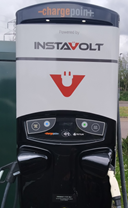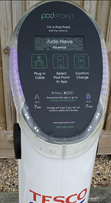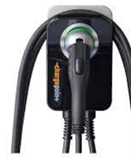Following the 2030 ban of new sales of diesel and petrol cars would you consider moving over to an electric vehicle (EV)?
Currently, most of us are used to buying fuel in litres and we understand range and miles per gallon (mpg). Mainly it is about making sure we do not put the wrong fuel in and finding a petrol station for a top-up. So what are the differences with an EV?
Research shows that there is a range anxiety with EVs and a lack of knowledge about how to charge them. This blog does not go into too much detail. It is just to get over the basics.
Factors to consider
EV charging comes in both AC (typically lower power and slower) and DC (typically higher power and faster). Plus there are a variety of different cable standards.

You also have to consider the following:
- How large is the car battery? This is vehicle specific and will tend to be larger in bigger cars;
- How long will it take to charge? This is determined by the charging technology and the design features of the car;
- Can I just charge at home? This depends on how long the trips are and so may require charging en route. Plus do you have off-road parking?
Perhaps the guideline to remember is the power in kW of the charge point and is directly equivalent to the range added (in miles) per 20 minutes of charging. So as an example using a 7kW point, 1 hour will add around 21 miles (7×3) range to the battery. Likewise using 50kW would add 150 miles range in an hour. However, the average range will be extended by up to 20% by passengers/load, regenerative braking, and economical driving.
Charge Points
There is a number of different types of the charge points, and here are some from the Eastbourne area:

50KW DC- Rapid Charging 
7kW AC – Supermarket 
7kW AC – Home
Now lets us look at this typical EV that has these ratings 22kW AC and 50kW DC.
- 3pin socket at home probably only transfers 3.7kW. Though the car could accept 22kW
- Standard chargepoint at home has an AC of 7kW even though rated at 22kW
- Fast charger – triple phase AC 22kW
- Rapid Charge – DC 50kW
Questions to Ask
Q1 Can all EVs accept all AC powers? – Typically Battery EVs charge at 7 kW AC whilst currently most Hybrid EVs with smaller batteries are limited to 3.7 kW AC.
Q2 Can all EVs accept all DC powers? – The maximum charging power will depend on the vehicle’s battery management system. Need to check the car specification.
Q3 Do all EVs have AC and DC charging? – All EVs have an onboard charger and should be able to convert power from AC. However, some older model cut corners and did not provide DC charging.
Q4 What happens if the vehicle charging limit is lower than the ChargePoint power? – The charging power will be reduced as required.
Q5 Will I always get the charging power advertised? – No, sometimes it will be less, especially where all the points are in use.
Finally, where are these charge points? Possibly the best resource is ZapMap. It provides locations and types of chargers. Tells you which payment network you would need to be on. Because there are different connectors between the EU/UK and Japan, it is worth looking at a car you might be interested in and refer to the specifications of the charge points and cables you can use.
There are other maps, provided by other organisations, but they work in a similar way. For each site, there is a review and the current information if it is in use.

In conclusion, with a bit of research, there is no need for anxiety. The EVs are becoming increasingly popular, and therefore using them is becoming considerably easier.
Paul Humphreys
EEAN Transport Group
Photo credit: Getty Images
